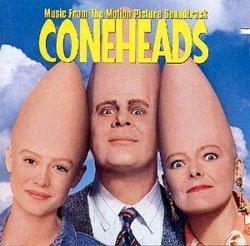As an owner of the Pogo Sketch, I couldn't disagree more.
Hmm. You've inspired me to sit back and have a bit of a think.
I have a very specific idea in my head of what a stylus should be, and maybe that's not universal. When I think "stylus" I think Wacom tablet: the tablet doesn't just detect the touch of the stylus, but also pressure, proximity and angle.
Proximity, now that I think about it, might not have any use on a pad. It's vital with a Wacom tablet, because without it, you can't see where your cursor's going to be until you actually touch. But on a pad, duh, the stylus will be right over the screen. So maybe proximity isn't useful on a pad.
(I know this sounds obvious, but settle down. This is literally the first time I've thought this through.)
Right now, I'm trying to think of uses for pressure sensitivity
besides creative applications. And I'm kind of drawing a blank. A brush is sensitive to pressure pushing harder creates a bigger stroke but a ballpoint pen is not. When you fill in a form or sign your name, you use a pen, not a brush. So pressure sensitivity wouldn't be absolutely essential
but I bet if Apple shipped a pad with stylus support that
didn't have pressure sensitivity, we'd hear screaming from the artists in the audience. "It comes with a stylus, but only for signing your name?" That doesn't seem like something Apple would do, even though they certainly could.
What is critically important in a stylus interface is precision. Never having used a Pogo Sketch myself I can't speak to it directly, but it doesn't look like it puts a
point on the screen. It looks like it puts a sort of roughly-fingertip-sized blob. I imagine (and correct me if I'm wrong) that writing with that would be like writing with the fattest magic marker available. Possible, and certainly better than nothing in a pinch, but not optimal.
I really don't know what the right answer is. Apple's stance with the iPad specifically is obvious: This is not a device to write on. For taking handwritten notes or signing things, use a pen; pens are fine, and it's not worth the frustration of a bad user experience when you've got a paper note pad nearby anyway.
This is a fine position to take. If I had an iPad, I'm sure I would rarely, if ever, miss the fact that I can't write on it. But at the same time, I can imagine that it would be useful to write on a pad if the details could be worked out. Microsoft seems to think they're on the right track, with Courier. But Microsoft has this uncomfortable track record of getting things, say, 80 percent right, then releasing them before they really work correctly, and expecting their customers to just adapt. So I'm not confident that Microsoft will be very influential in this area.
I think we can all agree, though, that a mythical "productivity pad" which the iPad is not meant to be is going to need a wickedly fast type of input. Keyboarding doesn't do it, and an imperfect pen interface won't be sufficient either.
Maybe Apple's working very hard on solving this problem right now, for all I know.




